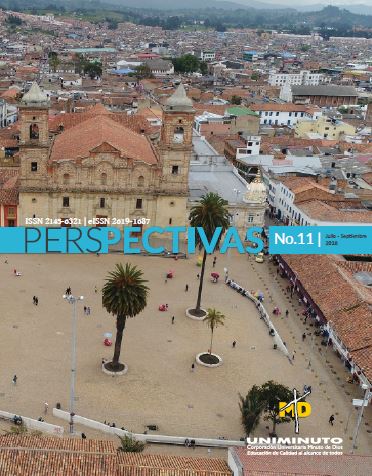La Nueva “antigua” amenaza: guerra biológica viral
Barra lateral del artículo
Cómo citar
Detalles del artículo
Contenido principal del artículo
Resumen
Las armas biológicas, entendidas como un agente biológico, se han utilizado desde hace cientos de años con diversos fines, pero con el uso específico de causar daños en la salud de las personas. Existen agentes biológicos como las bacterias, los hongos, las toxinas y los virus; estos últimos son analizados desde la perspectiva de entidades como la Organización Mundial de la Salud y se estudian sus potenciales usos como agentes biológicos virales. Ejemplos de los anteriores son el Dengue, la Encefalitis Equina Venezolana, la Enfermedad de Rift Valley y el caso de la Fiebre Amarilla como arma biológica.
En ese sentido, en este artículo se analiza la oportunidad, las dificultades y las problemáticas que tienen los agentes biológicos virales en el marco de la guerra biológica y las consideraciones de la ingeniería genética, en la modificación de agentes biológicos virales, para mejoramiento de la efectividad y eficacia de nuevos y más letales virus, así como el interés en términos del bioterrorismo desde un enfoque bioético de la investigación científica.
Referencias
071/htm/enlafron.htm
Arbiza, J. (1997). Biología de Los Virus. Recuperado de http://www.higiene.edu.uy/cefa/Libro2002/Cap 1.pdf
Arbiza, J. (2008). Aspectos generales de Biología Viral. Recuperado de http://www.higiene.edu.uy/cefa/2008/BiologiaViral.pdf
Atanze, I. (2012). Armas biológicas: Situación y desarrollo. 83, 1–14. Recuperado de http://www.ieee.es/Galerias/fichero/docs_opinion/2012/DIEEEO83-2012_ArmasBiologicas_SituacionRespuesta_I.BuenoAtanze.pdf
Cánepa, E. (2000). Fisiopatología de las infecciones virales. Piel, 1–8. Recuperado de http://higiene.edu.uy/cefa/Libro2002/Cap 2.pdf
Escobar, H. (2014). Necesidad de Implementación de Métodos de Detección para Bioterrorimos en Zonas Aduaneras [tesis de grado]. Universidad Militar
Nueva Granada, Bogotá.
Jardim, J. (2012). La guerra y la ciencia, 1–23. Recuperado de http://www6.rel-uita.org/agricultura/agrotoxicos/guerra_quimica.pdf
Lazo, G. W. (2002). Guerra biológica. Una síntesis de una antigua nueva guerra. Recuperado de https://revistamarina.cl/revistas/2002/2/wilson.pdf
Morán, A. (2015). ¿Qué es la tecnología CRISPR/Cas9 y cómo nos cambiará la vida? Dciencia, 1. Recuperado de http://dciencia.es/que-es-la-tecnologia-
crispr-cas9/
Organización Panamericana de la Salud. (2003). Respuesta de la salud pública a las armas biológicas y químicas Guía de la OMS.
PNA Bio. (2014). CRISPR/Cas9 (RGEN). Recuperado de http://pnabio.com/products/CRISPR_Cas9.htm
Romero Vázques, G. (2009). Biotecnología: generalidades, riesgos y beneficios. La UNED, 1–20. Recuperado
de http://www2.uned.es/expertobiotecnologia-alimentos/TrabajosSelecc/GloriaRomero.pdf
Saavedra, C. (2007). Bioterrorismo. Recuperado de http://www.reeme.arizona.edu/materials/Bioterrorismo.pdf
United Nations. (2010). Convención sobre la prohibición del desarrollo, la producción y el almacenamiento de armas biológicas y toxínicas
y sobre su destrucción. Proceedings of the Annual Meeting (American Society of International Law), 104 (June 1992), 200–205.
https://doi.org/10.5305/procannmeetasil.104.0200
Vannucci, L., Lai, M., Chiuppesi, F., Ceccherini-Nelli, L., & Pistello, M. (2013). Viral vectors: a look back and ahead on gene transfer technology.
The New Microbiologica, 36(1), 1–22. Recuperado de http://www.ncbi.nlm.nih.gov/pubmed/23435812
World Health Organization. (1970). Health Aspects of Chemical and Biological Weapons. Recuperado de http://apps.who.int/iris/bitstream/10665/39
444/1/24039.pdf
World Health Organization. (2009). Dengue: guidelines for diagnosis, treatment, prevention, and control. Special Programme for Research and Training
in Tropical Diseases, x, 147. https://doi.org/WHO/HTM/NTD/DEN/2009.1

